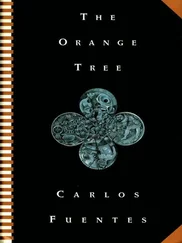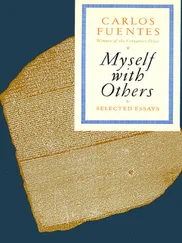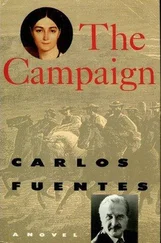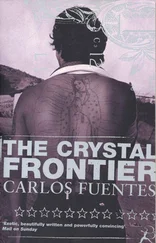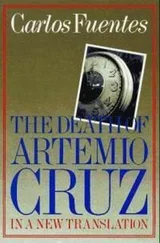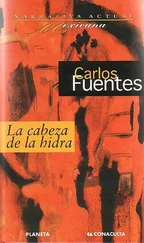A hand touched Laura Díaz’s shoulder. She recognized Laura Rivière, Artemio Cruz’s lover, who had overcome the fifteen years that had passed thanks to the elegant opalescent beauty concentrated in her unaging melancholy eyes.
“Come see me whenever you like. Why haven’t you ever visited?”
And then, homburg hat in hand, Orlando Ximénez came in. Laura, could not measure time; the only face she could confer on Orlando was the same youthful one he’d had at the dances at San Cayetano more than thirty years before. She felt a mild vertigo seeing the image of the boy who made love to her on the terraces scented with nocturnal oranges and sleeping coffee trees; she excused herself and left.
Gravitating toward something is not the same as falling toward it; it’s drawing closer, it’s when you draw close, Laura told Danton, who had thought, after the day with his father at the CTM and the Chamber of Deputies, This isn’t for me, but my dad’s right, what is for me? He too was gazing out from the balcony overlooking the Bosque de Chapultepec, and he knew that on the other side of the park was Las Lomas de Chapultepec section. That’s where the rich people lived, new and old money, he didn’t care, it was there that new mansions with swimming pools and lawns for garden parties and society weddings were being built, three-car garages, interior decoration by Pani and Paco el de La Granja, wardrobes by Valdés Peza, hats by Henri de Chatillon, flowers by Matsumoto, and banquets catered by Mayita.
How could a simple poor boy like himself, whose poverty was neither old nor new, get into those places? Because that’s what Danton López-Díaz wanted to do. He gave due attention to his father’s modest suggestions: should he be a politician, a businessman, a journalist, a military officer? Then he decided to create his own destiny — that is, his own fortune. And since in Mexico it was hard to acquire class without money, the young economics student decided he had no option but to acquire money with class. Leafing through the society magazines was enough to make him see the difference. There was the new society created by the Revolution, rich, living in Las Lomas de Chapultepec, insecure but daring, dark skinned but cosmetically lightened, impertinently showing off its recently acquired wealth for good or ill: dark men — soldiers, politicians, impresarios — married to light women — creoles in distress, long-suffering. The revolutionaries, in their armed descent from the north, had harvested the prettiest virginal buds from Hermosillo and Culiacán, from Torreón and San Luis, from Zacatecas and El Baj  o. Mothers of their children. Vestals of their homes. Resigned to the affairs of their powerful sultans.
o. Mothers of their children. Vestals of their homes. Resigned to the affairs of their powerful sultans.
And then there was the old, aristocratic, and impoverished society that lived on streets with the names of European cities, between Avenida Insurgentes and Paseo de la Reforma. Their houses were small but elegant, built around 1918–20, two-story buildings with stone facades, balconies, coach houses, and, overlooking the street, a piano nobile where one might glimpse mementos from the past — paintings and portraits, medals in velvet-lined frames, bibelots, mirrors darkened with age. Behind the public spaces, the mystery of the bedrooms, the unknown nature of the daily life of people who had once owned haciendas the size of Belgium, taken away by Zapata, Villa, and Cárdenas. Where did they bathe? How did they cook? How did they survive the catastrophe that had destroyed their world?
But oh how they prayed. That was visible. Every Sunday, just after one, the boys and girls of this “good society” met to go to Mass in La Votiva church on the corner of Génova and Reforma. Later, chatting, flirting, making plans to eat, where? At El Parador de José Luis around the corner on Niza? At Luisito Mun  oz’s 1–2–3 on Liverpool? At the Jockey Club at the Américas Hippodrome? At the home of one of those people with picturesquely intimate names — Gifty, Princess, Miss Chubby, Missy, Froggy, Skinny, Cheeky, Diver, Kitty? In Mexico, only aristocrats and thugs were known by their nicknames. What was the name of that highwayman who sliced off the fingers of Danton’s great-grandmother with a machete? The Hunk from where?
oz’s 1–2–3 on Liverpool? At the Jockey Club at the Américas Hippodrome? At the home of one of those people with picturesquely intimate names — Gifty, Princess, Miss Chubby, Missy, Froggy, Skinny, Cheeky, Diver, Kitty? In Mexico, only aristocrats and thugs were known by their nicknames. What was the name of that highwayman who sliced off the fingers of Danton’s great-grandmother with a machete? The Hunk from where?
Danton explored, calculated, and decided to begin there: one o’clock Mass in the white-and-blue La Votiva, Moorish as a repentant mosque.
The first time, no one turned around to see who he was. The second time, people looked at him with puzzled astonishment. The third time, a tall blond boy came over and asked who he was.
“I’m López.”
“López?”
“Yes, López, the most well-known name in the telephone book.”
That got a laugh out of the boy, who threw his head of wavy hair back, revealing a long neck where his Adam’s apple bounced up and down.
“López! López! López what?”
“Díaz.”
“And? What else?”
“Greene. And Kelsen.”
“Listen, everybody, this guy’s got more last names than all of us put together. Come have lunch at the Jockey. You look picturesque to me.”
“Thanks, but I already have a date. Next Sunday perhaps.”
“Perhaps? You mean the way it is in the bolero, ‘perhaps-perhaps-perhaps.’ You talk like a bolero, I mean like a song, not like a shoeshine boy.”
“And what’s your name, blondie?”
“Blondie! He calls me blondie! People call me the Curate.”
“Why?”
“I don’t know. Maybe it’s because Papa cures people. He’s a doctor. My second last name is Landa. I’m a descendant of the last city governor in the ancien régime. It’s my mother’s name.”
“And what’s your father’s name?”
“No jokes, now.”
“But you’re the one making jokes, sonny.”
“Sonny! He called me sonny! Ha-ha! No, I’m called the Curate, my father’s named López too, just like yours. Now that’s amusing, really amusing! We’re namesakes in reverse! It’s fate! Anastasio López-Landa. Don’t forget next Sunday. You seem like a good guy. But buy yourself a better tie. The ones you’ve been wearing look like a flag.”
What would a “better” tie look like? Whom to ask? The next Sunday, Danton turned up in church in riding clothes, jodhpurs and boots, a coffee-colored jacket, an open shirt. And with a riding crop in his hand.
“Where do you ride? Hmm … What did you say your name was?”
“López, like you. Danton.”
“The guillotine, ha-hal Your parents must really be something!”
“A joke a minute. The Atayde circus hires them when things get rough.”
“Ha-ha-ha, Danton! You’re a real scream, you know,” said the other López, shifting into English.
“Yeah, I’m the cat’s pajamas,” said Danton, A line from an American movie comedy.
“Listen, everybody, this guy knows everything. He’s the bee’s knees! He’s Tarzan’s mama!”
“Of course. Me Columbus. Cristobal Col��n!”
“And my sons are Crystal Balls, ha-ha! Look, I live right around the corner here on Amberes. Come with me, and I’ll lend you a tie, old sport.”
Danton turned La Votiva and the Jockey into his Sunday obligations, more sacred than taking communion — just to stay on the right side of his new acquaintances — without the benefit of confession.
At first his presence was disconcerting. He made a detailed study of the way the boys dressed. He did not let himself be put off by the girls’ cool manners, though he’d never seen he who knew only eternal mournings and the flowered silk outfits provincial women wore — so many young ladies in suits or kilts with sweaters, a cardigan over a matching sweater, and a pearl necklace on top of everything else. A Spanish girl, María Luisa Elio, attracted attention with her beauty and elegance; she was ash blond, slim as a little bullfighter, in a black beret like Michèle Morgan in the French movies they all went to see at the Trans-Lux Prado, a checked jacket, pleated skirt, and she leaned on an umbrella.
Читать дальше
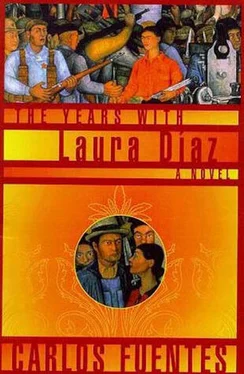
 o. Mothers of their children. Vestals of their homes. Resigned to the affairs of their powerful sultans.
o. Mothers of their children. Vestals of their homes. Resigned to the affairs of their powerful sultans. oz’s 1–2–3 on Liverpool? At the Jockey Club at the Américas Hippodrome? At the home of one of those people with picturesquely intimate names — Gifty, Princess, Miss Chubby, Missy, Froggy, Skinny, Cheeky, Diver, Kitty? In Mexico, only aristocrats and thugs were known by their nicknames. What was the name of that highwayman who sliced off the fingers of Danton’s great-grandmother with a machete? The Hunk from where?
oz’s 1–2–3 on Liverpool? At the Jockey Club at the Américas Hippodrome? At the home of one of those people with picturesquely intimate names — Gifty, Princess, Miss Chubby, Missy, Froggy, Skinny, Cheeky, Diver, Kitty? In Mexico, only aristocrats and thugs were known by their nicknames. What was the name of that highwayman who sliced off the fingers of Danton’s great-grandmother with a machete? The Hunk from where?